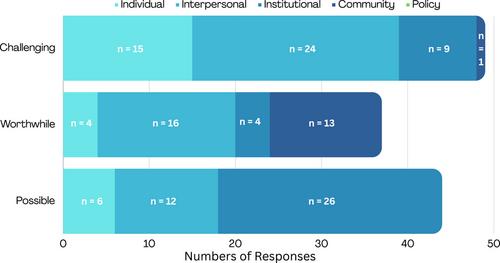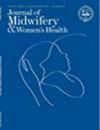Identifying Drivers and Barriers to Precepting Midwifery Students: “A Little Part of Me Lives on in Each Student Midwife”
Abstract
Introduction
Increased access to midwifery care is one strategy that could improve perinatal health outcomes and help address the maternal health crisis in the United States. A modifiable barrier to increasing the workforce is greater access to midwifery preceptors for clinical training. The objective of this research is to use the socioecological framework to identify midwives’ perceptions of the barriers and facilitators to precepting students in clinical areas.
Methods
Midwives attending a preceptor education and training workshop series responded to 3 different questions at the end of each session: (1) What makes precepting midwifery students challenging? (2) What makes precepting midwifery students possible? and (3) What makes precepting midwifery students worthwhile? Responses were coded to align with the socioecological framework, which distinguishes individual, interpersonal, community, institutional, and policy-level influences.
Results
Midwives’ responses were spread across the levels of the socioecological model except for policy. Participants identified institutional influences such as support as factors that made precepting feasible, both individual and interpersonal factors such as time constraints as areas that presented challenges to precepting, and community factors, like the joy of sharing midwifery, contributing to what made precepting worthwhile.
Discussion
Multiple levels of influence were identified in the preceptor process. Participants were internally motivated to precept while also articulating that to make precepting possible, there is a need for support from both colleagues and the greater systems within which they worked. Further studies are needed to investigate an ecosystem that facilitates an effective and sustainable model for midwifery precepting. Additionally, there is a need for efforts to engage and educate midwives in clinical practice about government advocacy that could actualize policy initiatives to support clinical midwifery education.


 求助内容:
求助内容: 应助结果提醒方式:
应助结果提醒方式:


